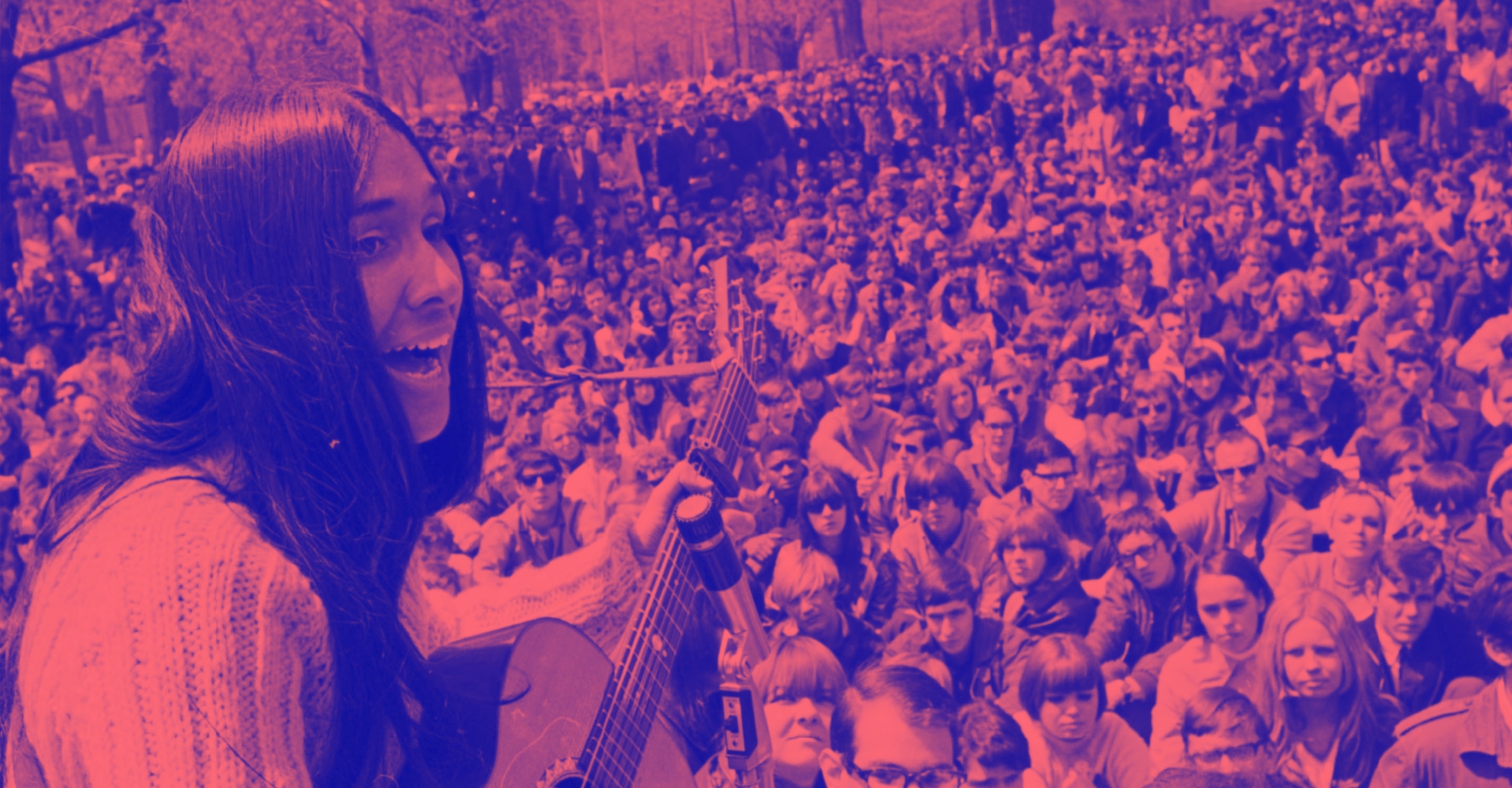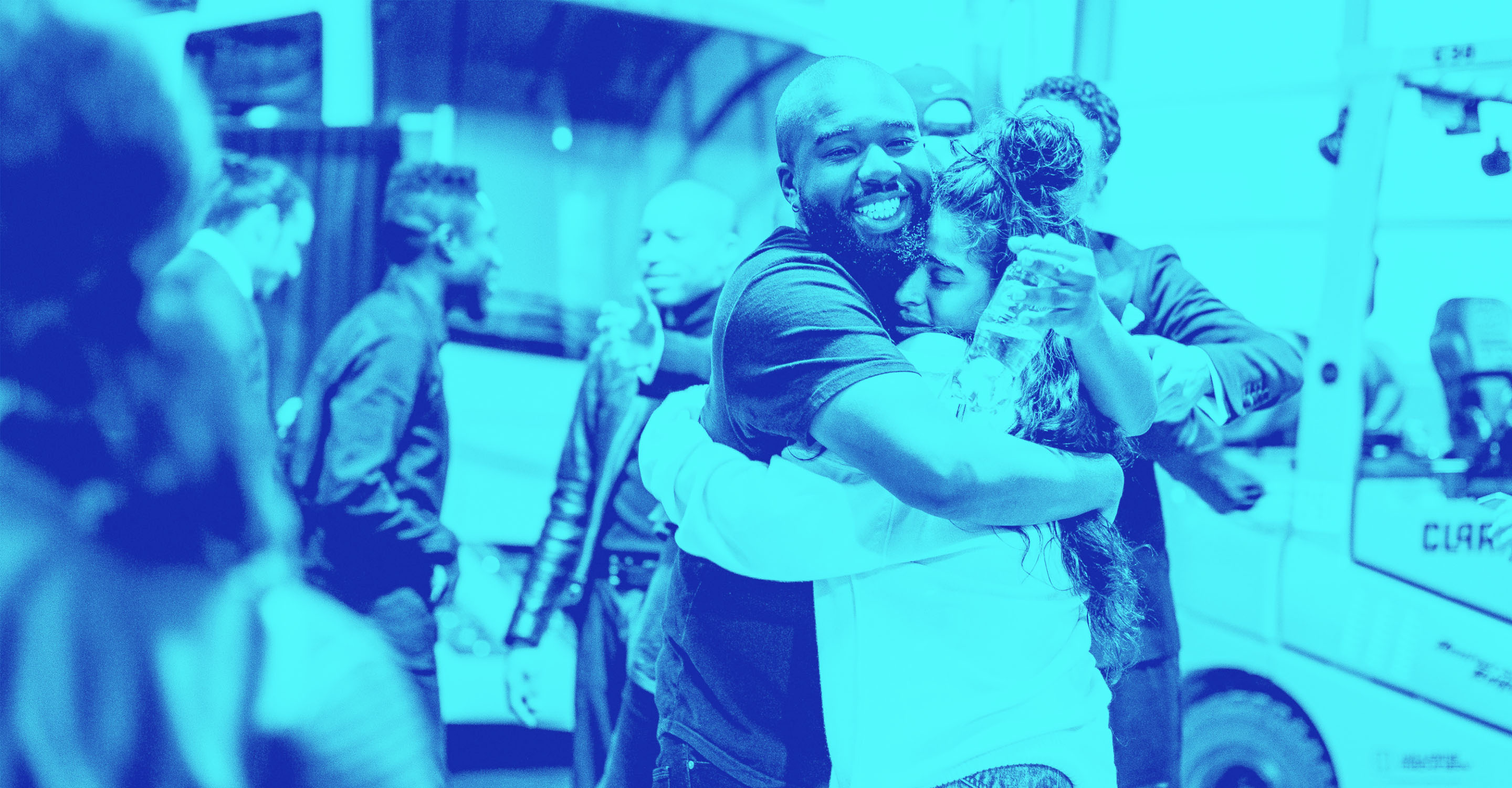
You've got to start somewhere. Every successful artist once stood in front of their bathroom mirror, singing into a hairbrush or playing air guitar.
For many Canadian and international stars, Toronto was their starting line. It was in this city they first studied music professionally, were inspired by what they saw in clubs, or maybe played their first gig in front of an audience.
Regardless of whether artists were born here, moved here, were passing through, or immigrated here, many consider Toronto their musical beginning.
Explore the stories of those artists and the venues that supported them in the early days of their careers.
Listen: A Playlist for Starting Out
This playlist features songs that were first heard in Toronto, featuring new musicians that would soon be familiar names around the world. Whether it was their first gig, their first cassette tape, or their first festival, these are the songs that helped these musicians get on the path to fame.
This playlist also showcases how important local Toronto venues were to the city's music scene. Without the open mic nights of Yonge Street clubs or the recording studios that could be booked for a few dollars by new Toronto artists, who knows what different directions these careers would have taken?
This online exhibition uses third-party applications including Spotify and YouTube. Check with your organization’s web administrator if you are unable to access content from these channels in the exhibition.
Origin Stories
Where and how a musician grows up is often reflected in their lyrics or heard in their melodies. Billy Joel has sung about his New York state of mind for over forty years. Buffy Sainte-Marie incorporates the musical traditions and chants of the Cree Piapot First Nation throughout her work. Halifax-born Sarah McLachlan weaves Celtic elements into her songs as a reflection of her Nova Scotian roots.
Origin stories can be a key to unlocking a deeper understanding of a musician’s work. Scroll to learn how Toronto shaped the artists and musicians that were born in or spent time in the city.
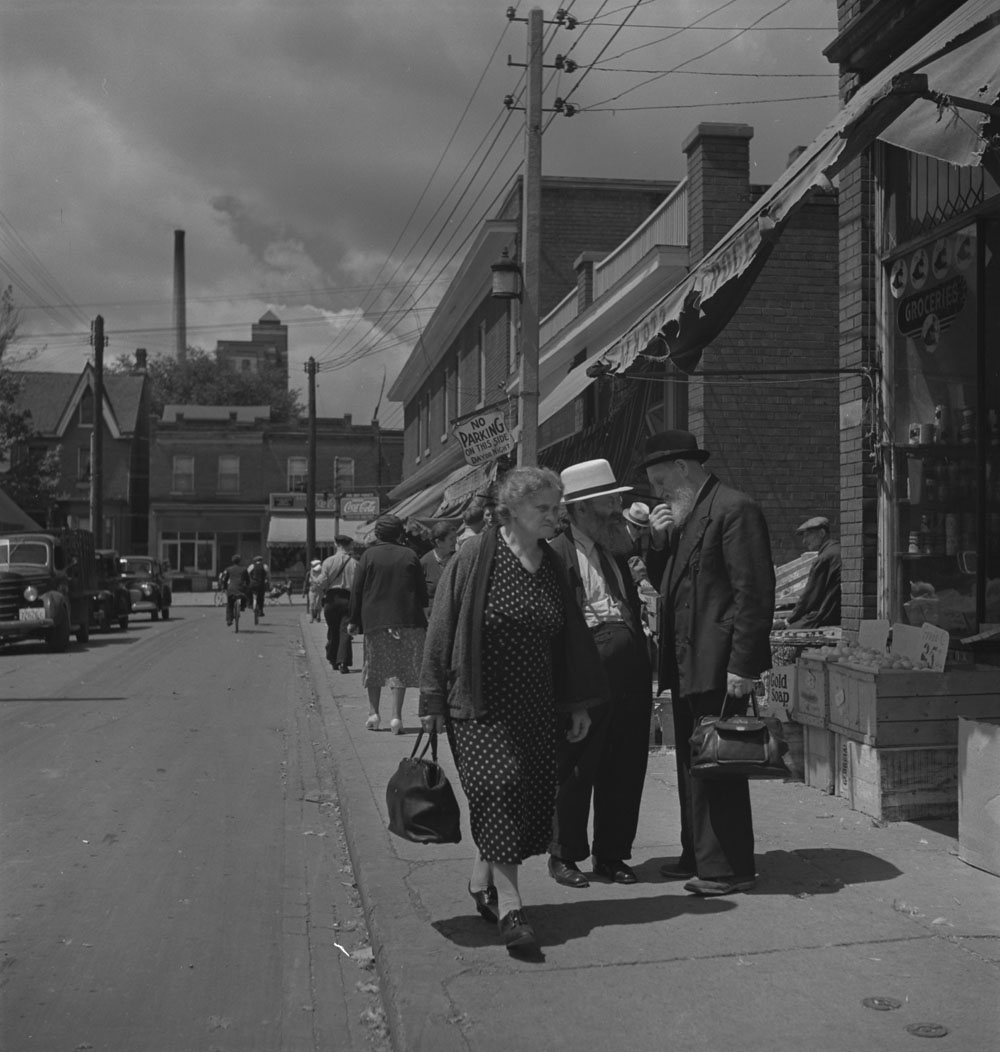
A street scene from Kensington Market in the 1930s, approximately the time Archie Alleyne would have lived in the neighbourhood.
Courtesy of the Kensington Market Historical Society
Archie Alleyne
The area now known as Kensington Market was jazz artist Archie Alleyne’s childhood neighbourhood in the 1930s.
With mothers calling to each other in Yiddish, butcher shops filled with fresh chickens, Alleyne grew up amid the sights, smells, and sounds of a market neighbourhood, one home to Italian, Ukrainian, Hungarian, and African Canadian communities.
Music Across Toronto
On the other end of town from Archie Alleyn’s Kensington Market, Glenn Gould was playing his first piano pieces while growing up in the Beach community in eastern Toronto during the 1930s and 1940s.
In the 1940s and 1950s, Robbie Robertson of the Band divided his time between the Cabbagetown neighbourhood of eastern Toronto and the Six Nations of the Grand River reserve. Several decades later, Aubrey Drake Graham (aka Drake) spent his early childhood in the 1980s on Weston Road before moving to Forest Hill.
Watch: Robbie Robertson Gets His Start
Watch Robbie Robertson of the Band talk to CBC (and former MuchMusic VJ) George Stroumboulopoulos about how life on the Six Nations of the Grand River reserve introduced him to a variety of musical styles and instruments. How did Robbie Robertson's experience of country music on the Six Nations of the Grand River reserve contribute to his later rock and roll legacy?
This online exhibition uses third-party applications including Spotify and YouTube. Check with your organization’s web administrator if you are unable to access content from these channels in the exhibition.

Courtesy of CBC’s George Stroumboulopoulos Tonight. Please note: this third-party video does not provide closed captions.
View Transcript[interior of studio, two individuals seated on chairs facing each other and talking]
George Stroumboulopoulos: Tell me about the experience of playing guitar in a city, and then you're on six nations reserve and that double life, you're going back and forth. What you learned as well as a writer.
Robbie Robertson: Well, When I was a very young kid and at six nations where my mom was, that's where she was born and raised. And we're from the Mohawk nation.
And whenever we would go there from my earliest memories, it seemed to me that everybody played an instrument or saying, or danced. Everybody. And it was because there was no other entertainment on the Rez. You had to make your own music, your own entertainment. And they did. And sitting there just like this, close to somebody, playing a mandolin or playing a guitar, it was.
If there was a beauty to it, to me, that I've, I was just so attracted to. And then as soon as my hands were almost big enough to get around the neck and looking at all the different instruments too, I, you know, at a young age, I thought, wow, that, that fiddle thing, that's pretty cool. That mandolin is great.
These drums, I liked these drums. So they were Indian drums. Right. And I was saying. But that guitar, that guitar, the girls are gonna like that guitar right?
George Stroumboulopoulos: There it is. There it is.
Robbie Robertson: Yeah. And this was before the whole rock and roll things started getting that was a few years later. Um, but it was Cowboys, Cowboys had guitars, so, and they sang country cause they lived in the country.
They sang country music. So it was Indians singing, cowboy songs,
George Stroumboulopoulos: Weird man. So weird. Did you tell them: hey listen…
Robbie Robertson: I just thought, well, if I just had, there was an openness about it and there was no nothing. There was no grind here. You know what I mean? They just thought this is great music. These are great songs.
And, and, and that was it. The, you know, that that was the whole reason for playing music.
George Stroumboulopoulos: Is that part of the reason why you think you're able to pull that, that real connected to your, at the root stuff off when the Band was making their name in LA?
Robbie Robertson: I think it's part of, I think it's all part of the picture. And then when I brought that back to the city, to Toronto, when I was a kid and everything, I felt like I was two steps ahead of things. You know what I mean? And the fact that I got it from the reservation. It's kind of extraordinary that that's where I got two steps ahead of everything.
Jackie Mittoo
Groundbreaking reggae singer and organist Jackie Mittoo was one of many thousands of Jamaicans to move to Canada in the late 1960s, 70s, and 80s. Arriving in Toronto in 1969, Mittoo lived in a thriving community of fellow ex-pat Jamaicans on Eglinton West, a neighbourhood today known as Little Jamaica.
Filled with Black-owned businesses, including notable record shops and restaurants, the area became known for its thriving reggae music scene, thanks in part to Mittoo’s international fame as well as his investments in local businesses.
Find Out More about Jackie Mittoo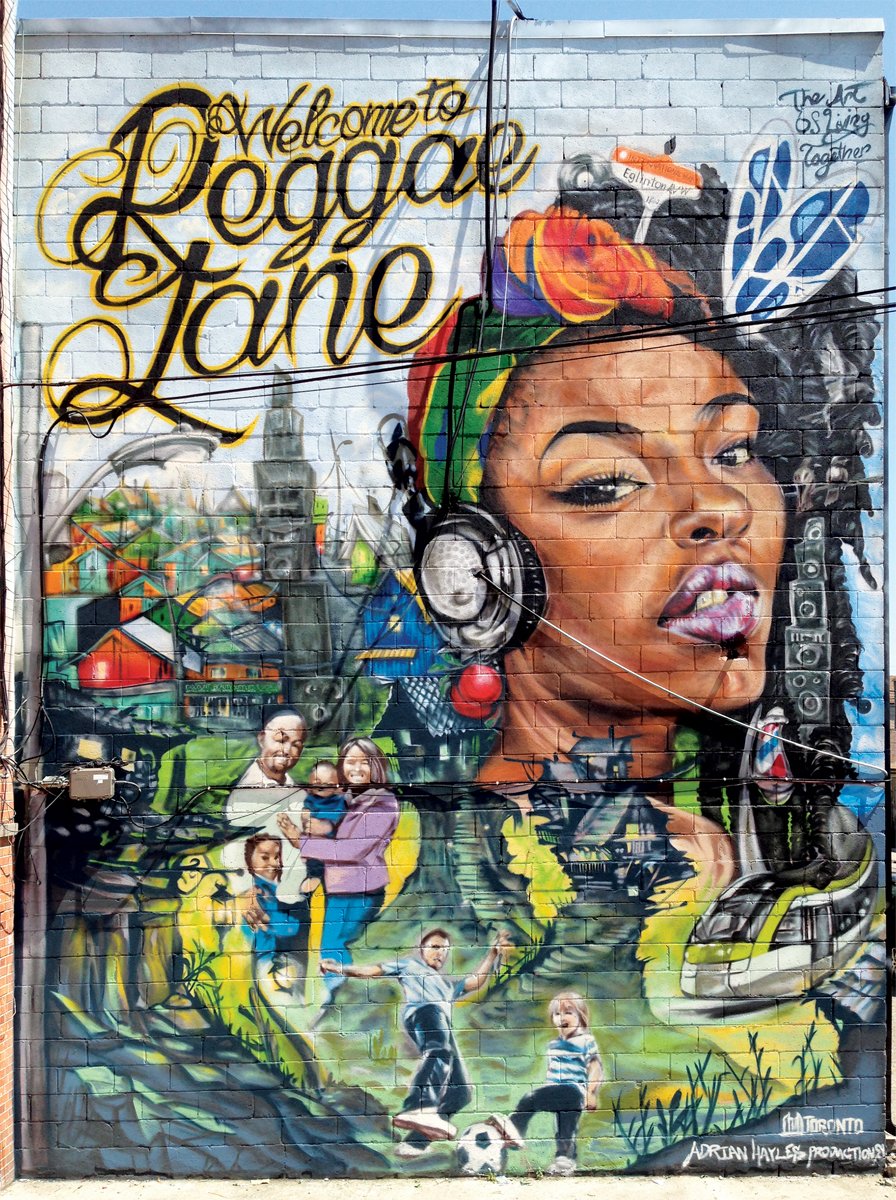
In 2015, a roadway behind Eglinton Avenue in the Little Jamaica neighbourhood of Toronto was renamed “Reggae Lane”. The name honoured the area as a hub for reggae recording beginning in the late 1960s, the period Jackie Mittoo moved to the neighbourhood.
Mural by Adrian Hayles
Listen: Reggae Lane
To coincide with the renaming of “Reggae Lane” in the Little Jamaica neighbourhood, Toronto reggae artist Jay Douglas wrote and recorded the song “Reggae Lane.”
Douglas also was part of a wave of immigration from Jamaica to Toronto during the 1960s: his first performances were at Toronto’s Central Technical School as a young student.
He has since become a JUNO Award-nominated reggae artist.
This online exhibition uses third-party applications including Spotify and YouTube. Check with your organization’s web administrator if you are unable to access content from these channels in the exhibition.
No new high rise here
— Jay Douglas, "Reggae Lane"
Untouched by time
Buildings are left behind
We’re going to Reggae Lane.
Music Education and Mentorship
Music education in Canada has helped many young musicians hone their craft. From classical lessons on theory and harmony to schools for the arts to mentorship programs to industry accelerators, music education has provided opportunities for many musicians to learn the intricacies of their instruments, whether piano, violin, or voice.
Glenn Gould
In 1940, Glenn Gould was enrolled in the Toronto Conservatory of Music (later renamed the Royal Conservatory of Music) to study piano. At the time, he was one of the only classical performers to have received his music training entirely in Canada.
Find Out More about Glenn Gould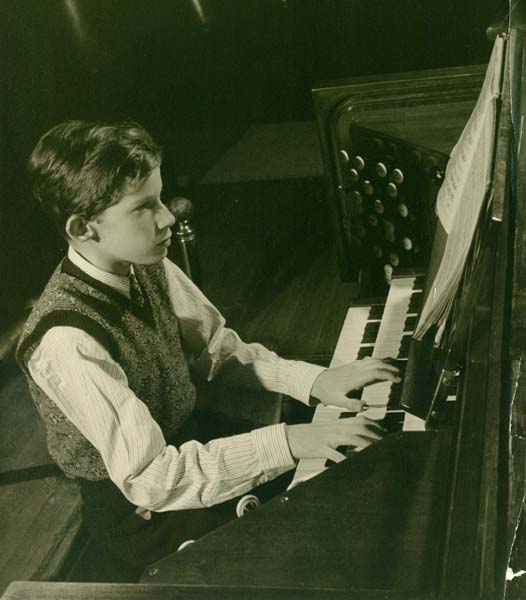
Glenn Gould playing the organ in the concert hall of the Toronto Conservatory of Music, circa 1945
Photo by Page Toles. Library and Archives Canada, Glenn Gould fonds, MUS 109-290, nlc-3749. Glenn Gould Estate. Courtesy of the Royal Conservatory of Music. Reproduced with the permission of the Estate of Glenn Gould
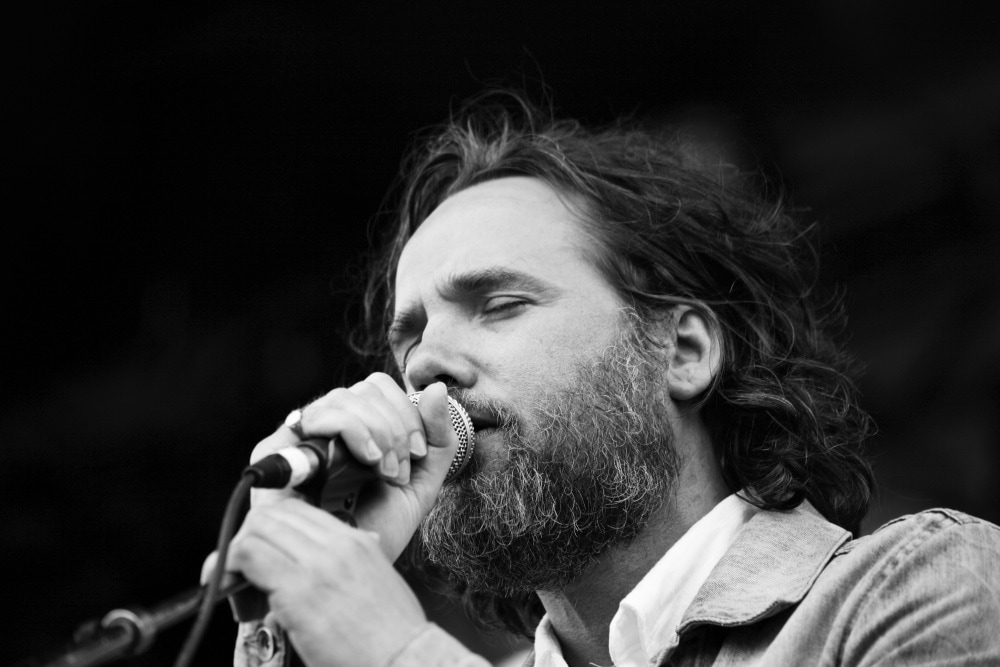
Kevin Drew of Broken Social Scene, Toronto.
Photo by Ryan Bolton
Broken Social Scene
Attending music class isn’t just about learning how to play an instrument or sing. It can also be where you meet friends, write songs with classmates, even start a band. In the 1980s, future-Broken Social Scene members Kevin Drew, Amy Millan, and Emily Haines met while attending the Etobicoke School of the Arts. The friendships they formed in music class would shape their personal and professional careers.
Barenaked Ladies
You never know where you’ll find your band’s next guitar player or drummer, whether you’re sitting in English class or doing math homework. Many Toronto bands have been formed through school friends over the years.
Ed Robertson and Steven Page of Barenaked Ladies attended the same public high school in Scarborough in the 1980s. They discovered a shared taste in music when they both attended the same Peter Gabriel concert in 1987.
Find Out More about Barenaked Ladies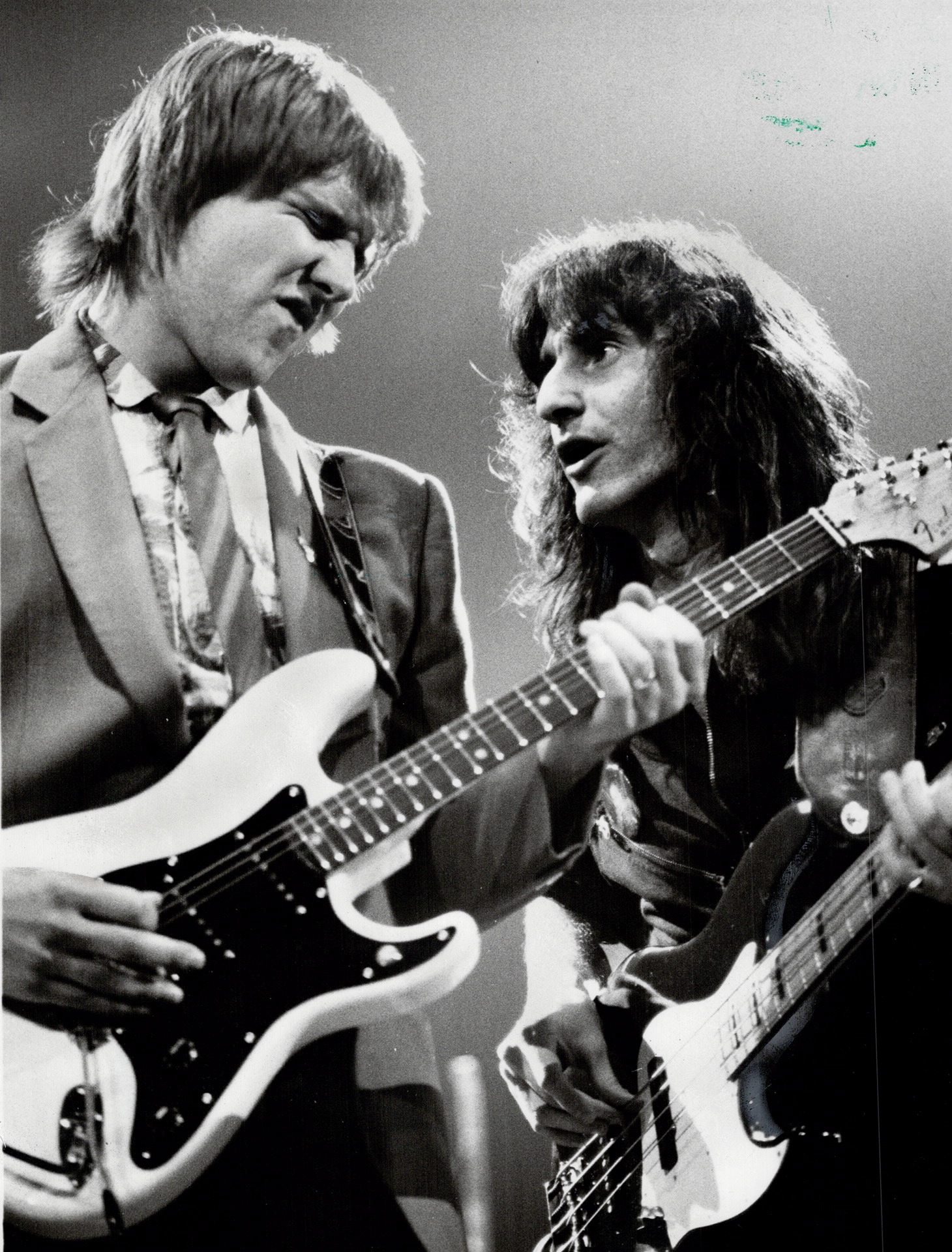
Alex Lifeson and Geddy Lee of Rush play at Maple Leaf Gardens, 1981. Photo by Michael Stuparyk, courtesy of Toronto Star Photo Archives
Rush
Rush’s future guitarist and bass player, Alex Lifeson and Geddy Lee, first crossed paths at a Willowdale school in North York in the late 1960s. They soon were meeting up after school to play songs in their parents’ basement.
As a teenager, Lee was recovering from his father's recent death. He was encouraged by a school guidance counsellor to use music as an outlet for his emotions and to work through his grief. Lee has often said that it was his discovery of music as a teenager that helped him through difficult times.
...Music was the first thing I found that I was good at picking up and expressing myself with.
—Geddy Lee, Interview with CBC, 2016
PUP
Punk rock band PUP came out of a childhood friendship in the 1990s among Nestor Chumak, guitarist Steve Sladkowski, and drummer Zack Mykul in Toronto’s Junction neighbourhood. Thanks to the availability of shows with no age limit, the friends were able to attend shows together from a young age.
“If a really strong all-ages scene hadn’t existed in Toronto, I would never have started playing music, and that’s true of all of us here,” says Sladkowski. PUP has paid the favour forward: making a majority of their shows available to all ages.
Find Out More about PUP
PUP members Zack Mykula, Nestor Chumak, Stefan Babcock, and Steve Sladkowski pose for a picture on stage at Danforth Music Hall in Toronto.
Photo by Amanda Fotes
Jessie Reyez
While living in Toronto, Jessie Reyez participated in The Remix Project, an incubator that provides necessary resources for teens from underserved communities to advance their careers in creative industries. There she met and collaborated with mentors that helped her to develop connections in the music industry.
Find Out More about Jessie Reyez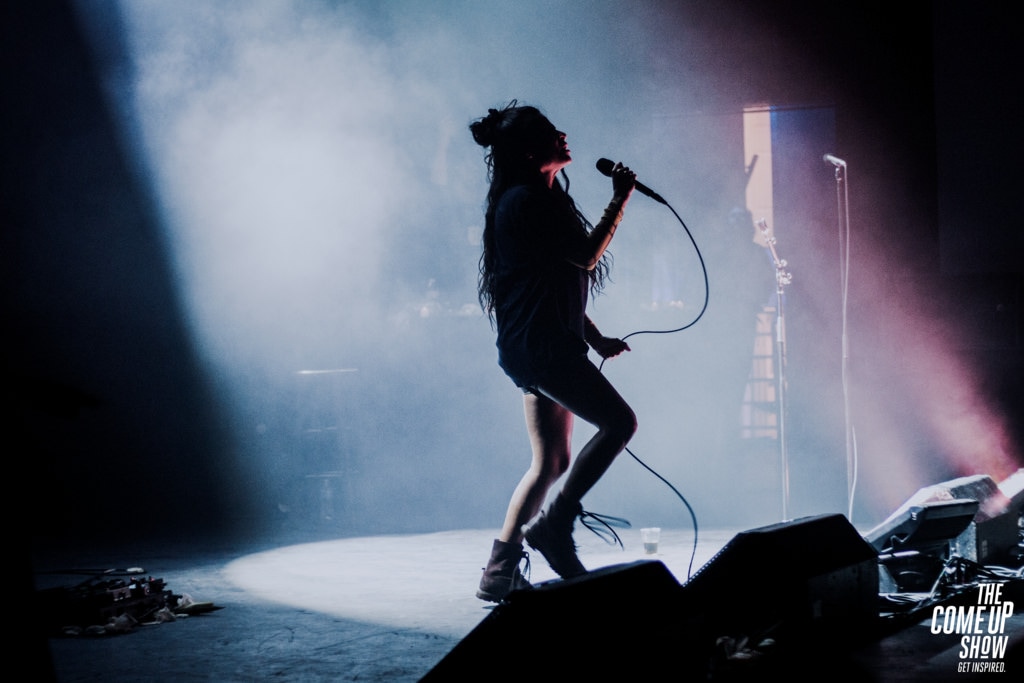
Jessie Reyez at Danforth Music Hall as a surprise guest at Allan Rayman's concert.
Photo by Mac Downey, licensed via Creative Commons
Getting Your First Gig
Whether it’s an open mic night at a coffee shop or a talent competition at Massey Hall, a musician never forgets their first gig. In the 1940s and 1950s, Toronto was home for many music competitions and festivals that showcased new or young talent such as Glenn Gould or Gordon Lightfoot.
In the 1960s, rock and roll venues on Yonge Street or folk coffee houses in Yorkville provided an inclusive space for aspiring musicians like Joni Mitchell and Buffy Sainte-Marie to try out their material before an audience.
In the 1970s and 1980s, new clubs and restaurants along College and Queen Streets sought out new Toronto musicians like the Parachute Club or PUP to perform nightly. Such spaces gave much-needed opportunities to artists: giving them a space to perform, collaborate, and grow a loyal fan base.
Famous First Gigs
Kevin Drew attended Toronto’s Harris Institute where he studied the business side of music. While there, he met Yvonne Matsell, the primary music booker for clubs like Ted’s Wrecking Yard, the El Mocambo, and the Horseshoe Tavern. It was a connection that would help his band, Broken Social Scene, land their first big gigs in Toronto.
Several decades earlier, Gordon Lightfoot got his first early break at the Village Corner, one of the first Yorkville coffee houses to feature live music in the early 1960s. Lightfoot performed as one half of the Two Tones group, recording their first album before a live audience.
This online exhibition uses third-party applications including Spotify and YouTube. Check with your organization’s web administrator if you are unable to access content from these channels in the exhibition.
Le Coq d'Or
Beginning in the late 1950s, Yonge Street venues began to book musicians and bands playing a new kind of music: rock and roll. Owned by the kingpin of a local bowling empire, Le Coq d’Or took a chance on a young rockabilly singer named Ronnie Hawkins in the late 1950s. Hawkins may have already been a star by the time he sang to Toronto crowds, but it was the first professional gig for the majority of his backing band, almost of whom were Ontarian teenagers.
Hawkins’ band didn’t stay green for long. The Hawks eventually flew the coop, changing their name to the Band, and redefining Americana music along the way.
The Riverboat
Opened in 1964 in Yorkville, the Riverboat Coffee House soon became the must-play venue for any aspiring folk musician in Toronto such as Buffy Sainte-Marie and Gordon Lightfoot. Joni Mitchell debuted her iconic hit “Both Sides Now” before Riverboat audiences.
Find Out More about The Riverboat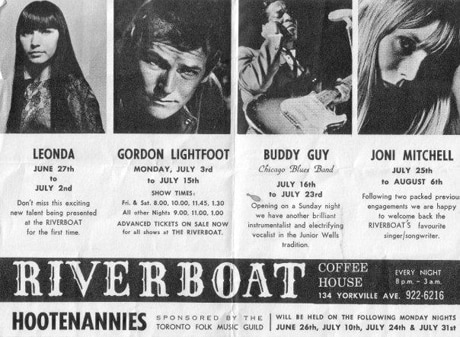
An ad for the Riverboat Coffee House's "Hootenannies" of 1967, which featured a range of folk singer/songwriters, including Gordon Lightfoot and Joni Mitchell. The event was sponsored by the Toronto Folk Music Guild, which also published a magazine about music called “Hoot.”
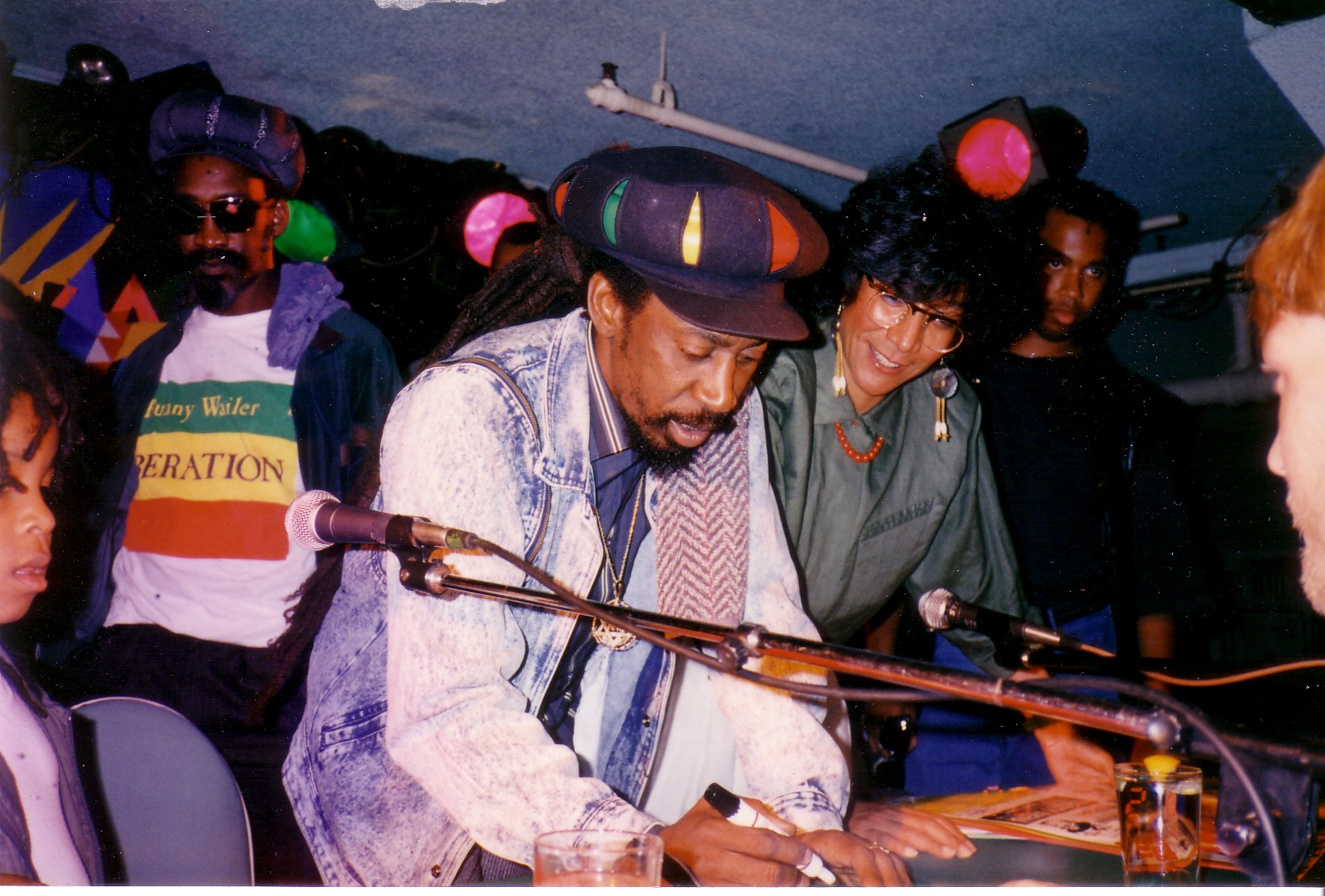
Jamaican singer-songwriter Bunny Wailer signs autographs after a set at the BamBoo in the 1980s. Wailer was one of the original members of reggae group The Wailers with Bob Marley and Peter Tosh.
Courtesy of Patti Habib
The BamBoo
By the 1980s, a new centre of live music had sprung up in Toronto. Located along West Queen West, new venues in this neighbourhood, like the BamBoo, offered a space for fans of all types of music.
Kicking off its grand opening in 1983 with an appearance by the Parachute Club, the club also hosted regular reggae and African music events, often in collaboration with local radio station CKLN-FM. The flourishing of Ghanaian and Caribbean music in the city during the 1980s filled the BamBoo’s events calendar.

